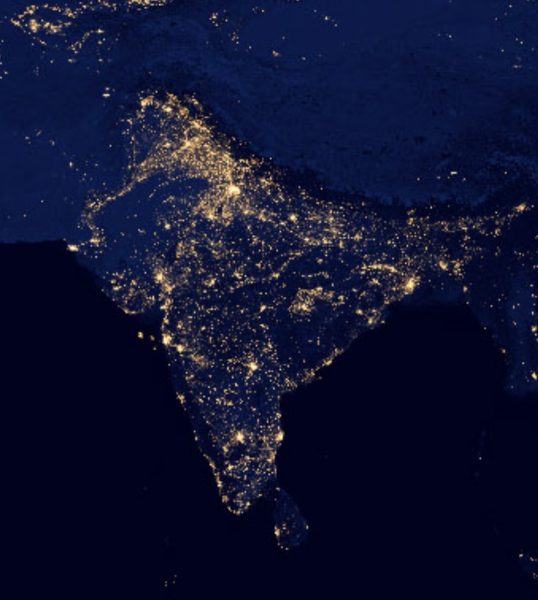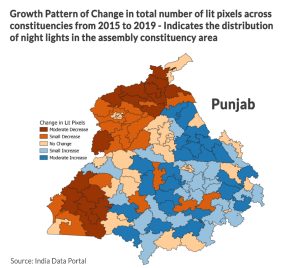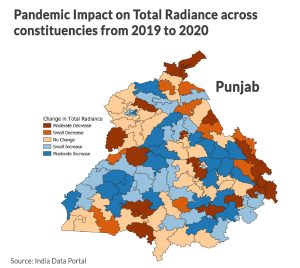
Punjab shining in terms of economic activity: nightlights data
Economic activity, as indicated by total radiance, grew in 89% of the constituencies in 2015-19, says report by ISB’s India Data Portal

Punjab, which is going to vote on Sunday, February 20, has seen a surge in economic activity in the period from 2015 to 2019, according to data gathered through nightlights by the India Data Portal, Bharti Institute of Public Policy, Indian School of Business (ISB).
Over the past decade or so, the data gleaned from nightlights, traced from outer space through satellite captures, are increasingly being used as a measure of economic activity. This particularly measures activities in the manufacturing and services sectors.
Growth trend in total radiance
The data reveal that there was a growth trend in total radiance over the five-year period in Punjab, with 104 of 117 constituencies, comprising 88.88% of the State, showing an increase. “Most of Punjab has had a small to moderate increase in total radiance, signifying surging economic activity in the State,” said ISB in the report. “Only two constituencies — Jalalabad and Lambi — have witnessed moderate decline in total radiance.”
Also watch: What the night lights say about the economy
It went on to say that the five constituencies of Guru Har Sahai, Sri Hargobindpur, Fatehgarh Churian, Majitha and Ludhiana Central showed a small decline while six constituencies displayed no change in total radiance.

“The change in total radiance depicts that SAS Nagar has shown the most increase of 3,000 pixels in these five years, followed by Kharar, with an almost 2,800-point increase, pointing towards an immense surge in economic and developmental activities,” said the ISB report.
Pixel count
A more granular way to interpret nightlights data is through the number of pixels, which is counted via technologically advanced means.
The data collated thus show that the border districts of Punjab witnessed decreases in lit pixels. While 24 constituencies showed a moderate increase in lit pixels, 23 showed a small increase; i.e. 40.1 per cent constituencies showed a small to moderate increase in lit pixels. This indicates diversification/expansion of economic activity to other areas in these constituencies, said the report.
Also read: At rally in Punjab, Modi claims Congress belittles Pulwama sacrifice
“Around 34% of the constituencies have shown no change in per cent lit pixels, highlighting the developed nature of the State,” said the ISB report. “In total, 35 per cent have shown a rise in percent lit pixels between 2015 and 2019. Balachur and Ghanaur constituencies are some of the notable mentions for economic development.”
Pandemic impact on the State
The ISB’s India Data Portal has published the data for 2019 and 2020 separately to show how far the COVID pandemic impacted economic activity. The change in total radiance between 2019 and 2020 showed that Punjab “largely remained immune to the pandemic impact”, said the report.

Of 117 constituencies, 18 per cent showed moderate decrease, 8 per cent recorded small decrease, and 32 per cent saw no change. Also, 22 per cent saw a small increase and 21 per cent showed a moderate increase. “These five extensive categories elaborate upon the intensity of economic activities and demonstrate 75 per cent of the constituencies in Punjab remain immune to the pandemic effect,” said the report.
The change in percent lit pixels showed that 54 per cent of the constituencies recorded no change, it added.


